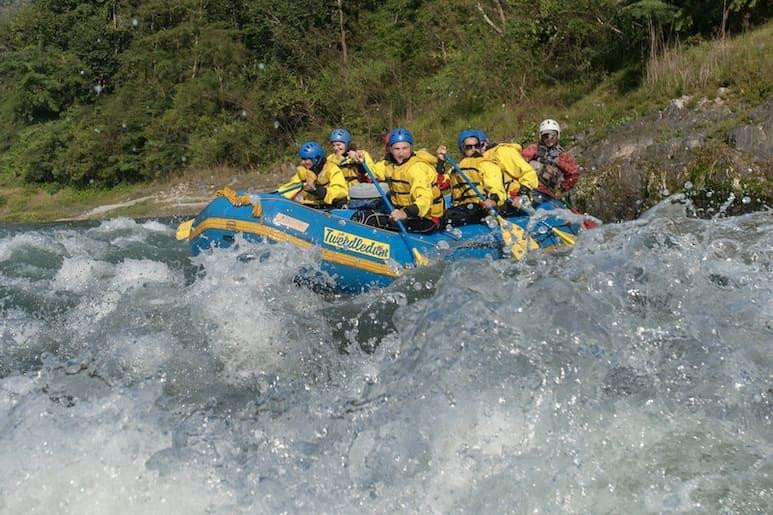Rafting in Nepal is an exciting adventure that draws thrill seekers from all over the world. The country’s fast-flowing rivers, breathtaking scenery, and numerous rapids make it a popular whitewater rafting destination. However, as with any adventure sport, rafting carries risks. Understanding these hazards and taking necessary steps will help you have a safe and pleasurable experience.
The Power of Nature
One of the most thrilling aspects of rafting in Nepal is the power of its rivers. But this power also presents significant risks. Strong currents, unexpected rapids, and varying water levels can be dangerous. During the monsoon season, rivers can swell rapidly, making even the most experienced rafter cautious.
Capsizing and Falling Out
Capsizing or falling out of the raft is a common risk in white-water rafting. Even though you are equipped with a life jacket and helmet, being thrown into the cold, fast-moving water can be disorienting and frightening. Swift water can carry you downstream quickly, making it difficult to get back to the raft or shore.
Physical Injuries
Rafting can be physically demanding. Paddling through strong rapids requires strength and coordination. There’s also a risk of hitting rocks or other obstacles in the river, which can lead to bruises, cuts, or more serious injuries. It’s crucial to wear appropriate gear, including a helmet and a life jacket, to protect yourself.
Personal Experience: On another rafting trip, I slipped while trying to get back into the raft and bruised my arm. It was a painful reminder that even a small mistake can lead to injury. Since then, I always double-check my gear and make sure I’m properly positioned in the raft to minimize the risk of accidents.
Hypothermia
Nepal’s rivers are fed by glaciers and can be extremely cold, especially in higher altitudes. Prolonged exposure to cold water can lead to hypothermia, a dangerous condition where your body loses heat faster than it can produce it. Wearing a wetsuit can help protect against hypothermia, but it’s also important to get out of the water and warm up as quickly as possible if you fall in.
Unpredictable Weather
Weather in the mountains can change rapidly. A sunny day can quickly turn into a storm, with heavy rain and strong winds making the river more dangerous. Always check the weather forecast before heading out and be prepared for sudden changes. Guides are usually very knowledgeable about local weather patterns and will make safety decisions based on current conditions.
Importance of a Qualified Guide
Having a qualified and experienced guide is one of the best ways to mitigate risks while rafting. Guides are trained to handle emergencies and know the river’s characteristics. They provide important safety briefings and instructions on how to navigate the rapids. Listening to and following your guide’s directions is crucial for a safe rafting trip.
Final Thoughts
Rafting in Nepal is an incredible adventure that offers a unique way to experience the country’s natural beauty. However, it’s essential to be aware of the risks and take necessary precautions. Respect the power of the river, wear appropriate gear, listen to your guide, and be prepared for the unexpected. By doing so, you can enjoy the thrill of rafting while staying safe.
Rafting has provided some of the most amazing experiences of my life. The adrenaline rush of overcoming rapids, the companionship with other rafters, and the stunning surroundings make it all worthwhile. However, each excursion has reminded me of the significance of staying safe and respecting nature’s strength. Whether you’re a seasoned rafter or a newbie, understanding the dangers and being prepared will help you have an unforgettable rafting vacation in Nepal.

